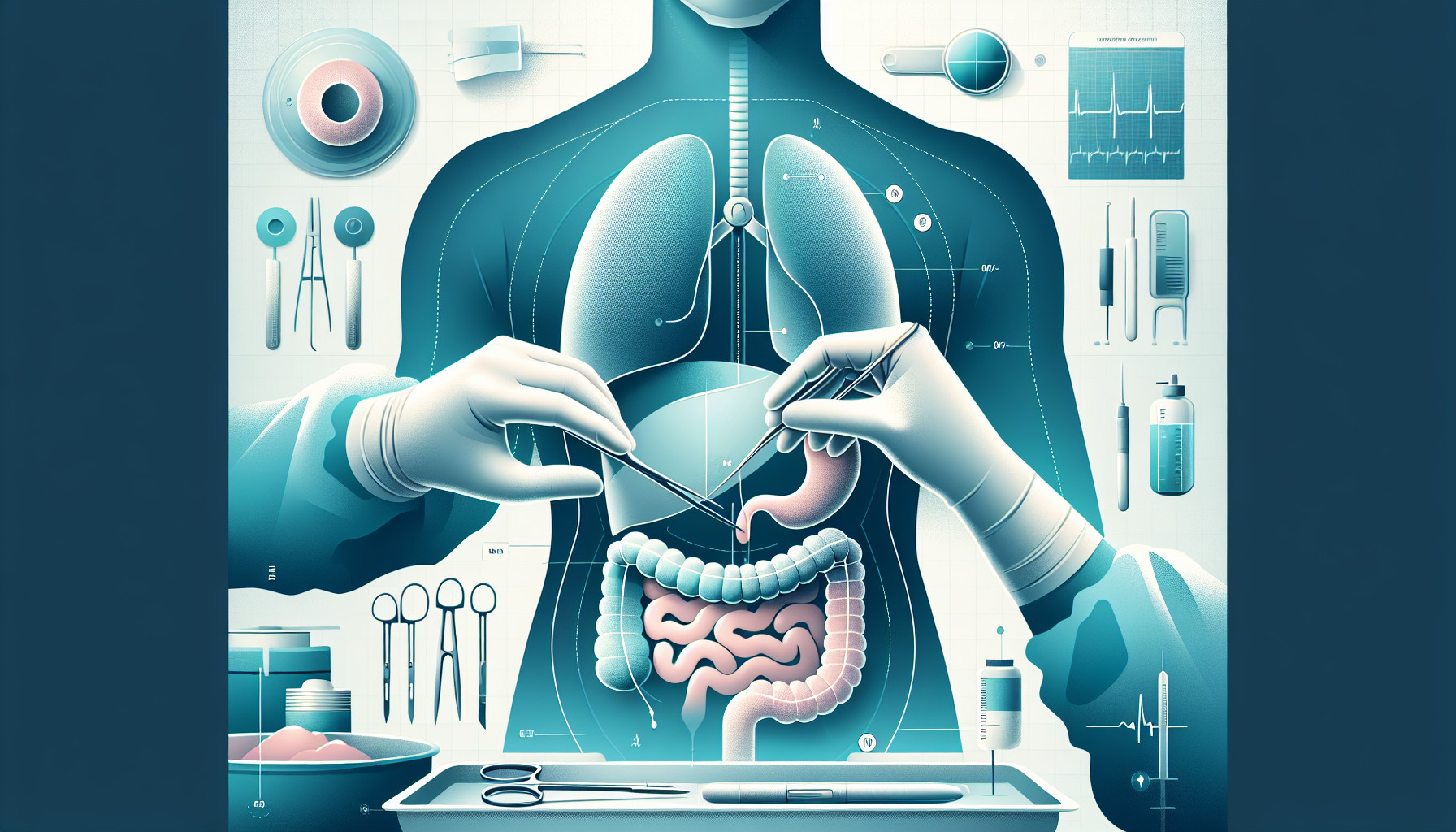Our Summary
The research paper is about a medical procedure called concomitant hiatal hernia repair and transoral incisionless fundoplication (cTIF), which is used to treat severe acid reflux or GERD in patients with hiatal hernias larger than 2 cm. This procedure is an alternative to traditional anti-reflux surgery. The researchers wanted to assess how effective and safe this procedure is.
To do this, they reviewed various studies from different databases, including PubMed, EMBASE, SCOPUS, and Cochrane, up until February 14, 2024. They looked at whether patients were able to completely stop using proton pump inhibitors (PPIs), which are medications used to decrease stomach acid. They also examined other measures of GERD, side effects, and any adverse events.
They found seven studies that met their criteria, which involved a total of 306 patients. The results showed that about 73.8% of patients were able to stop using PPIs after the procedure. There was also a significant improvement in GERD symptoms based on validated questionnaires. The complication rate was fairly low, at 4.4%, and the rate of readmission to the hospital within 30 days was also low, at 3.3%. Some patients experienced difficulty swallowing (5.3%) and gas bloating (6.9%).
In conclusion, the researchers suggest that cTIF could be a promising alternative to traditional surgery for treating severe GERD in patients with larger hiatal hernias. It seems to be just as effective and safe in the short term, with few side effects. However, they note that more research is needed to assess its effectiveness over the long term.
FAQs
- What is concomitant hiatal hernia repair and transoral incisionless fundoplication (cTIF)?
- What was the success rate of patients being able to stop using proton pump inhibitors (PPIs) after undergoing the cTIF procedure?
- What side effects and complications were found in the study related to the cTIF procedure?
Doctor’s Tip
A helpful tip a doctor might tell a patient about hiatal hernia repair, specifically in relation to cTIF, is to discuss the potential benefits and risks of the procedure thoroughly before making a decision. It is important for the patient to understand that while cTIF may offer relief from GERD symptoms and reduce the need for PPIs, there is still a possibility of experiencing side effects such as difficulty swallowing or gas bloating. Patients should also be aware that more research is needed to fully understand the long-term effectiveness of cTIF. Ultimately, the decision to undergo hiatal hernia repair should be made in consultation with a healthcare provider after considering all options and potential outcomes.
Suitable For
Patients who are typically recommended for hiatal hernia repair include those with severe acid reflux or GERD, particularly those with hiatal hernias larger than 2 cm. These patients may have symptoms such as heartburn, regurgitation, chest pain, difficulty swallowing, or chronic cough. They may also be taking proton pump inhibitors (PPIs) to manage their symptoms. It is important for these patients to undergo a thorough evaluation by a healthcare provider to determine if hiatal hernia repair is the best course of treatment for their condition.
Timeline
Before the hiatal hernia repair:
- Patient experiences symptoms of severe acid reflux or GERD, such as heartburn, regurgitation, chest pain, difficulty swallowing, and coughing.
- Patient undergoes diagnostic tests, such as endoscopy, pH monitoring, and imaging studies, to confirm the presence of a hiatal hernia and assess the severity of the condition.
- Patient may be prescribed medications, such as proton pump inhibitors (PPIs), to manage symptoms and decrease stomach acid production.
After the hiatal hernia repair:
- Patient undergoes the cTIF procedure to repair the hiatal hernia and perform transoral incisionless fundoplication to reconstruct the valve at the junction of the esophagus and stomach.
- Patient is monitored closely post-procedure for any complications or adverse events.
- Patient is able to stop using PPIs in about 73.8% of cases and experiences significant improvement in GERD symptoms.
- Patient may experience some side effects, such as difficulty swallowing and gas bloating, but the complication rate is low.
- Patient has a low rate of readmission to the hospital within 30 days after the procedure.
- Long-term effectiveness of cTIF in treating severe GERD in patients with larger hiatal hernias still needs to be studied further.
What to Ask Your Doctor
- What are the potential risks and complications associated with cTIF for hiatal hernia repair?
- How long is the recovery period after cTIF and what can I expect in terms of pain and discomfort?
- Will I need to make any lifestyle or dietary changes following the procedure?
- How long will it take for me to see improvement in my GERD symptoms after cTIF?
- Are there any specific factors that may affect the success of the procedure in my case?
- How often will I need to follow up with you after the procedure?
- What are the chances of needing additional treatment or surgery in the future after cTIF?
- Are there any restrictions on physical activity or lifting after the procedure?
- Can you provide me with information on the long-term effectiveness and success rates of cTIF for hiatal hernia repair?
- Are there any alternative treatment options for my condition that I should consider or explore further?
Reference
Authors: Jaber F, Ayyad M, Ayoub F, Patel KK, Makris KI, Hernaez R, Skef W. Journal: Surg Endosc. 2024 Oct;38(10):5528-5540. doi: 10.1007/s00464-024-11201-2. Epub 2024 Sep 13. PMID: 39271515
